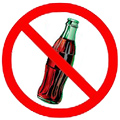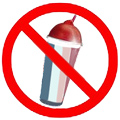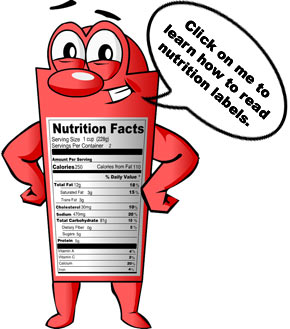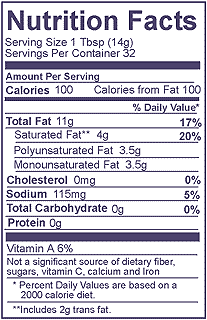Five Star Meals

Raising the Bar for School Meals
In an effort to continually improve the quality of the menus we offer our students, we are raising the bar on the standards of our school meals. Our focus is on enhancing the diet of students with more nutritious choices here at school and by providing nutrition education that will help students form healthy habits that last a lifetime!
Federal legislation known as Hunger-Free Kids Act of 2010 authorizes funding and sets policy for USDA's core child nutrition programs. The Healthy, Hunger-Free Kids Act allows USDA the opportunity to make real reforms to the school lunch and breakfast programs by improving the critical nutrition and hunger safety net for millions of children. This act has established the healthy guidelines that form the basis for good nutrition in schools. We encourage you to follow similar healthy guidelines at home.
Key enhancements include an increase in the availability of fruits, vegetables, whole grains, and fat-free and low-fat fluid milk in our meals. We are also reducing the levels of sodium, saturated fat, and eliminating added trans fat in meals. We do not supersize our meals, but instead strive to meet the nutrition needs of students within their age-specific calorie requirements.
See how we're building better menus in the video below:


Nutrition
Good nutrition leads to great academic performance
Your body needs healthy fuel to perform, to grow and to ward off illness and disease. Would you feed a million dollar racehorse junk food & soda? Of course not, so think about what you eat...because you are worth far more than a horse!
Good nutrition has a positive and direct impact on your ability to do well in school. When your nutritional needs are met, you have the cognitive energy to learn and achieve. You will be better prepared to learn, more likely to attend school, and are more apt to take advantage of learning opportunities.
Protein – Choose a variety of foods with lean protein
Protein is indispensable and found throughout every tissue in our body. Protein is a vital source of energy but its most important function is building and repairing tissue. We also need protein for our immune function; proteins transport vitamins and minerals throughout our body.
Grains – Make half of all the grains you eat whole grains
Eating grains, especially whole grains, provides health benefits. Dietary fiber from whole grains may help reduce blood cholesterol levels and lower risk of heart disease, obesity, and type 2 diabetes. Grains are important sources of many nutrients, including several B vitamins, magnesium, and selenium.
Vegetables – Make at least half of your plate fruits and vegetables
Eating vegetables provides health benefits—people who eat more vegetables and fruits as part of an overall healthy diet are likely to have a reduced risk of some chronic diseases. Vegetables provide nutrients vital for health and maintenance of your body.
Fruits – Make at least half of your plate fruits and vegetables
Eating fruit provides health benefits—people who eat more fruits and vegetables as part of an overall healthy diet are likely to have a reduced risk of some chronic diseases. Fruits provide nutrients vital for health and maintenance of your body.
Dairy – Always choose fat-free or low-fat (1%) milk
Milk and dairy products are especially important to bone health during school aged years. It provides important sources of calcium, potassium, and vitamin D, and helps to reduce the risk of cardiovascular disease, type 2 diabetes, and helps to lower blood pressure in adults.
Less is Best
Fats - Focus on replacing high-fat foods with vegetables, fruit, poultry, lean meat, whole grains, and fat-free or low-fat dairy products. The average American still consumes about 15% of total calories as saturated fat; recommended is 10% or less.
Individual food items served at school will not contain more than 23 grams of fat with an exception of one item per week. No food items can exceed 28 grams of fat at any time (with peanut butter as an exemption). We do not allow deep-fat frying as a method of on-site meal preparation at any of our schools.
Sodium - We have aggressive goals for reducing sodium with targeted implementation over the next 10 years. By reducing processed foods and choosing more fresh fruits, vegetables, and dairy, sodium consumption is lowered. Your body only needs about 500mg/day, but the average American diet exceeds the RDA amount of 2300mg.
Foods with Minimal Nutritional Value will not be Offered

Soda & Soda Water

Water Ices

Chewing Gum

Certain Candies
Nutrition Information – Understanding Food Labels

In order to plan a healthy diet, we must know how to read a food label. Food labels show us if a food has a little or a lot of certain nutrients. Look on the side of a product to find the Nutrition Facts title.
You will find the serving size of the food below the nutrition facts title. The servings per container are included to let you compare what you actually eat with the serving size. If the serving size is 1 cup and you eat 2 cups, double the numbers on the label.
% Daily values are listed to give you an idea of how one serving contributes nutritionally to a 2000 calorie diet. Use % daily values to see if a food has a little or a lot of a nutrient.

The amount of calories in one serving is listed. Only a few nutrients are listed—those that relate to today’s most important health issues: total fat, saturated fat, cholesterol and sodium because people eat too much of these. Fiber, vitamins A and C, calcium and iron are listed because people do not eat enough. Try to eat at least 100% of the daily value of these every day.
What Are Nutrients?

Nutrients are substances found in food that are needed for good health. Your body can't make nutrients, so they must be supplied by food. More than 40 nutrients in food are classified into six groups: carbohydrates, fats, proteins, vitamins, minerals and water. Each has a specific function.
- Carbohydrates – the body's main energy source, classified into starches and sugars. Fiber aids digestion.
- Protein – supplies energy and amino acids for building, repairing, and maintaining every cell in your body.
- Fats – supply energy, transport nutrients, and provide storage and insulation for your body.
- Vitamins – trigger body processes, needed in small amounts to regulate chemical reactions in the body.
- Minerals – promote chemical reactions and form body structures.
- Water – part of every cell, carries nutrients and removes wastes.

